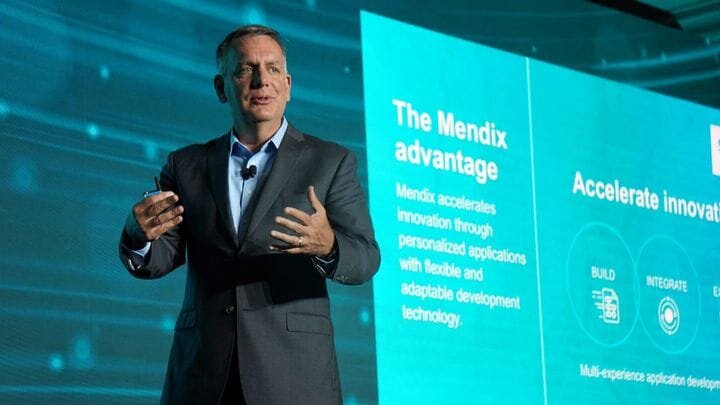
CEO Tony Hemmelgarn took the stage as CEO of Siemens PLM Solutions in New York City at the Siemens Media and Analyst Conference.
By the time he left the stage, he was CEO of another company, Siemens Digital Industries Software. You can call us Siemens Software, says Hemmelgarn. He was still high on Mendix, acquired last October for $730 million. Mendix is to bridge Siemens PLM application, Teamcenter with MindSphere, with NX, other Siemens applications, as well as ERP solutions, databases, data lakes…whatever—a “low code” that would allow engineers to access all sorts of data, whether it be on local drives, in databases, on the cloud, streaming… whatever. He also announced Xcelerator, which is a little harder to explain.
A press conference was held on the last day of the conference. Highlights include Hemmelgarn’s favorite example of data analysts gone bad, correlating mozzarella cheese consumption with civil engineering degrees. And much more. The Q&A wanders, but from Hemmelgarn, one theme emerges: substance over hype. Yes, new technology is hyped up, but it must make business sense.
Hemmelgarn: The market is pushing us on additive manufacturing. I admit that for a few years we have been behind, but that is not the case anymore. Five or more years ago, there was a lot of hype about everyone having a printer in their house. Break a coffee cup and 3D print a new one rather than going out to buy one. I thought that was ridiculous. Everybody was not going to have a printer.
![Example of a 3D print of a duct from an HP 3D printer, showing several parts created as one, all of them nested to get maximum parts in a build volume. [Source: ENGINEERING.com]](https://fabbaloo.com/wp-content/uploads/2020/05/image-asset_img_5eb08cf94b1d9.jpg)
It was the height of optimism. But even today, people still do not understand what it means to manufacture for 3D printing. We see a duct (above) from a HP 3D printer. Six parts made as one, 22 percent increase in airflow. You wouldn’t have designed that kind of part in a million years. You need CFD [computational fluid dynamics] for simulation. You need those kinds of discussion. We’re still talking about printing coffee cups.
I understand new technology gets hyped up. Then reality sets in and the hype slows. We have to be ready if it takes off again. Same thing for IoT. It’s mostly all hype initially, then it adjusts, then it will take off. You want to be ready.
Same with AR/VR. We see a lot of things that are sexy and cool in AR/VR, but they can’t provide any business value and they’re not functional. AR/VR from us, our competition, is definitely cool, but is it realistic? Can you put it in production mode and get business from it? But again, you have to be ready for it when the market is there.
Read more at ENGINEERING.com

